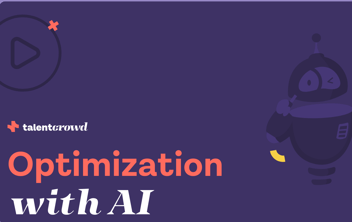As we continue our series on AI in software development, it's crucial to recognize that while AI can be a potent tool for developers, it's not without its pitfalls. Understanding and avoiding common mistakes in AI integration is key to harnessing its full potential. Whether you're a veteran developer or just starting, being aware of these errors can greatly enhance your use of AI in your projects.
In today's rapidly evolving technological landscape, AI has garnered significant attention for its ability to revolutionize various industries, including software development. However, it's important to approach AI implementation with caution and a realistic understanding of its capabilities.
1. Overestimating AI Capabilities
One common trap that developers fall into is overestimating what AI can do. It's easy to get swept up in the AI hype, expecting it to be a panacea for all development challenges. However, it's essential to remember that AI is a tool, not a magician. While AI excels in pattern recognition and data processing, it struggles with tasks requiring deep contextual understanding or creative problem-solving. Setting realistic expectations and understanding the strengths and limitations of your AI tools is crucial. AI is excellent for automating repetitive tasks, but for more complex challenges, human creativity and insight are irreplaceable.
Understanding AI's Role in Problem-Solving
To effectively leverage AI, it's important to discern between tasks that AI can handle efficiently and those that require human intervention. AI algorithms are designed to follow specific sets of rules and patterns, making them ideal for tasks like sorting data, finding patterns, or executing well-defined procedures. However, when it comes to problem-solving that requires out-of-the-box thinking, abstract reasoning, or emotional intelligence, human developers take the lead. For instance, in software development, while AI can efficiently identify potential bugs or performance issues, determining the best way to solve these problems often requires a developer's unique understanding of the project's broader context and goals. Balancing the use of AI with human ingenuity ensures a more nuanced and effective approach to software development, leading to innovative solutions that AI alone couldn't conceive.
2. Lack of Human Oversight
Another mistake that developers make is neglecting the necessary human oversight. Despite its power, AI isn't autonomous and requires human guidance and supervision. Without adequate management, errors might go unnoticed, or AI models may veer off course. Regular review of AI outputs and involving experienced developers in the process are essential practices. They can identify anomalies and provide insights that keep AI aligned with project goals. Human oversight ensures that AI remains reliable and effective.
The Importance of Human Expertise in AI Integration
Incorporating human expertise into the AI oversight process is not just about error checking; it's about adding a layer of strategic and ethical decision-making that AI cannot achieve on its own. Experienced developers bring a depth of knowledge and context to the table that AI systems cannot replicate. They understand the subtleties of the project's objectives and can make nuanced decisions that align with the broader vision of the software. This human element is particularly crucial when it comes to interpreting AI suggestions and outcomes. An AI model might offer several solutions, but it takes a skilled developer to choose the most appropriate one, considering factors like long-term maintainability, scalability, and user experience. Regular interactions between human developers and AI systems foster a collaborative environment where AI's analytical power is enhanced by human creativity and critical thinking, leading to more robust and innovative software solutions.
3. Ignoring AI Ethics and Bias
AI systems can unintentionally perpetuate biases present in their training data, leading to unethical outcomes. It's essential to prioritize ethical considerations in AI implementations. Regular audits for bias and involving diverse teams in the development process can help mitigate this risk, ensuring a broader range of perspectives and experiences are considered. By actively addressing bias and ethics, developers can promote fairness and inclusivity in their AI applications.
Proactive Steps Towards Ethical AI Usage
Addressing AI ethics and bias goes beyond just the development phase; it extends into the deployment and monitoring stages as well. Proactive steps such as continuously updating training data to reflect a diverse range of inputs, and incorporating feedback mechanisms to capture and correct biases, are vital. This ongoing effort helps in ensuring that AI systems remain fair and ethical over time. It also fosters trust among users, as they see that the AI systems they interact with are built and maintained with a commitment to ethical standards. By taking these steps, developers not only enhance the integrity of their AI applications but also contribute to the broader conversation on responsible AI use in the tech industry.
4. Overreliance on AI for Decision-Making
Relying too heavily on AI for decision-making is a critical error. While AI can offer valuable insights, it should not replace human judgment, particularly in crucial decision-making scenarios. AI operates in absolutes, ones and zeros, and lacks the nuanced understanding required for complex, strategic decisions. Developers should use AI as a supportive tool, critically evaluating its suggestions and combining them with their own expertise. By striking a balance between AI and human judgment, developers can make informed decisions that consider both technical insights and broader strategic considerations.
Cultivating a Synergistic Relationship with AI
The synergy between AI and human decision-making is pivotal in cultivating innovative and sustainable solutions. AI's role should be viewed as augmentative rather than authoritative. This perspective encourages developers to not just accept AI-generated solutions at face value but to engage in a deeper analysis that considers the unique aspects of each project. For example, in areas like user experience design or feature prioritization, AI can provide data-driven insights, but the final decision should reflect an understanding of user needs and business goals, areas where human intuition and experience are invaluable. Encouraging a culture where AI's analytical prowess is complemented by human critical thinking and contextual understanding can lead to more holistic and effective decision-making in software development.
5. Misalignment with Business Objectives
Finally, a significant oversight is failing to align AI projects with business objectives. While it's tempting to explore new and exciting AI applications, it's crucial to ensure that they address specific business challenges or enhance certain operations. Each AI initiative should have a clear goal that contributes to the overall business strategy. By aligning AI projects with business objectives, developers can maximize the value and impact of their AI implementations.
AI has the potential to tremendously enhance software development. However, it's essential to be aware of and avoid common pitfalls that can hinder its effectiveness. By recognizing the limitations of AI, providing human oversight, prioritizing ethics, avoiding overreliance on AI for decision-making, and aligning projects with business objectives, developers can harness the full power of AI while ensuring responsible and impactful implementations. At Talentcrowd, we're committed to helping you effectively navigate the AI landscape. Visit our website for more insights, free strategy sessions, and connections with top-tier tech talent. Together, we can innovate smartly and responsibly.



